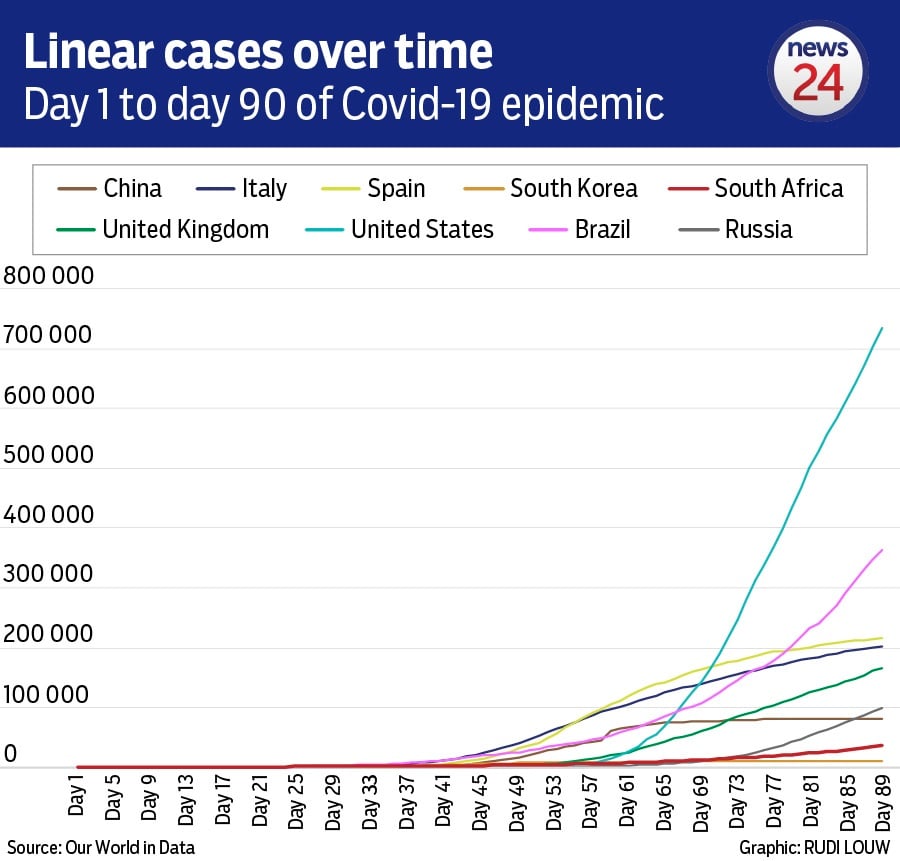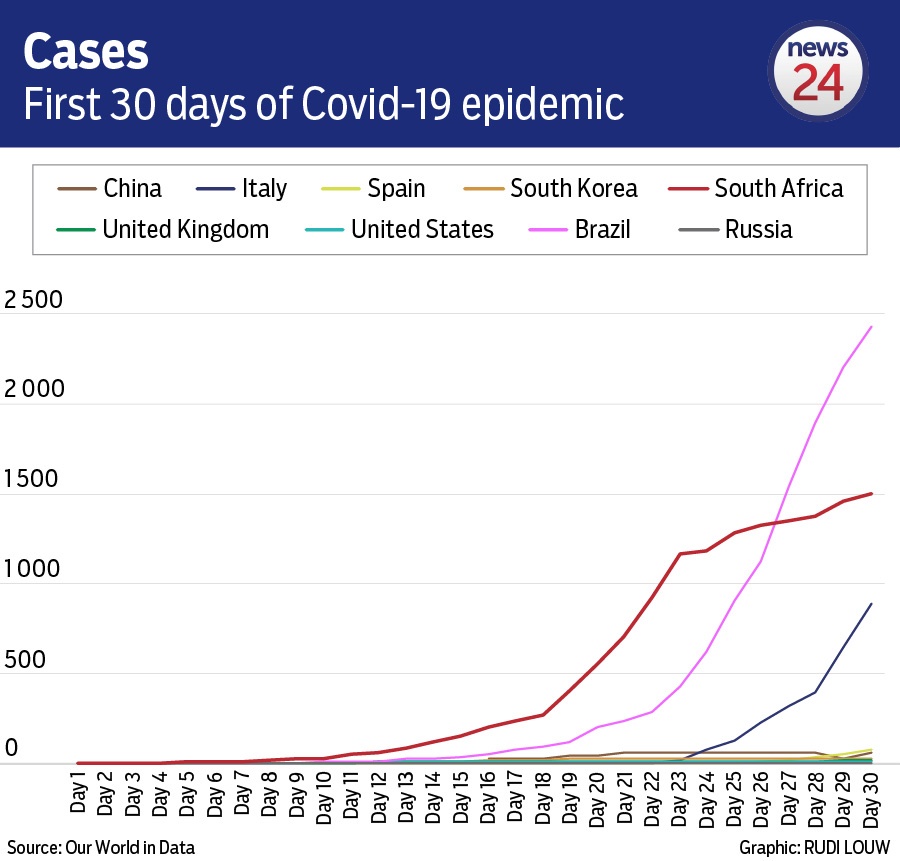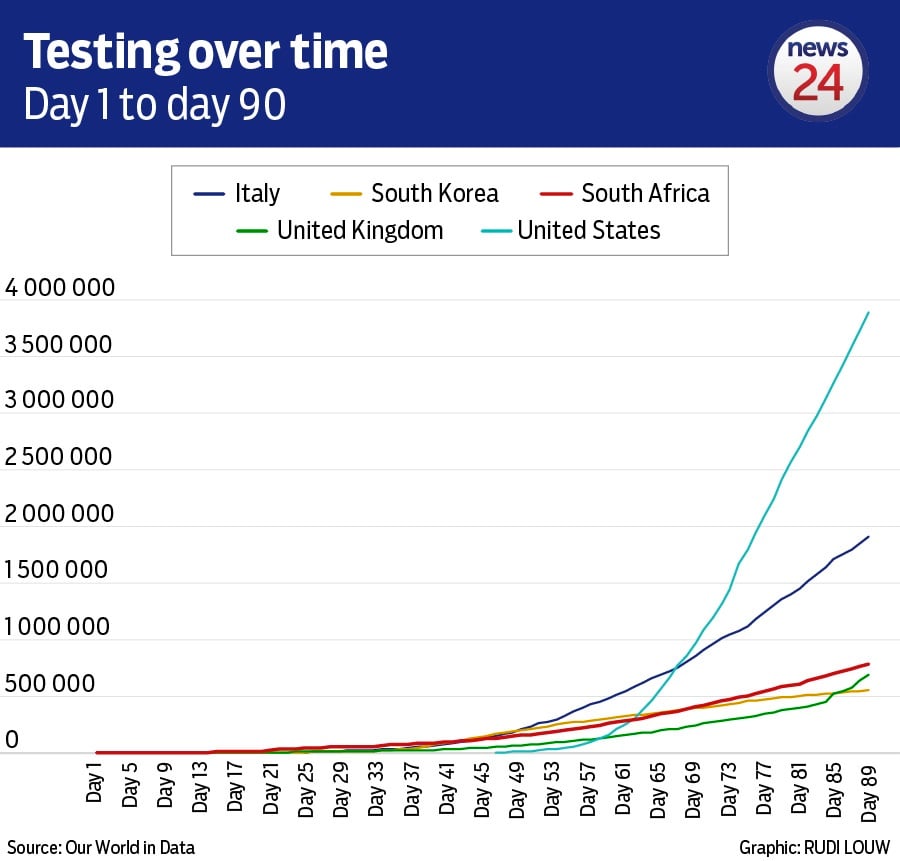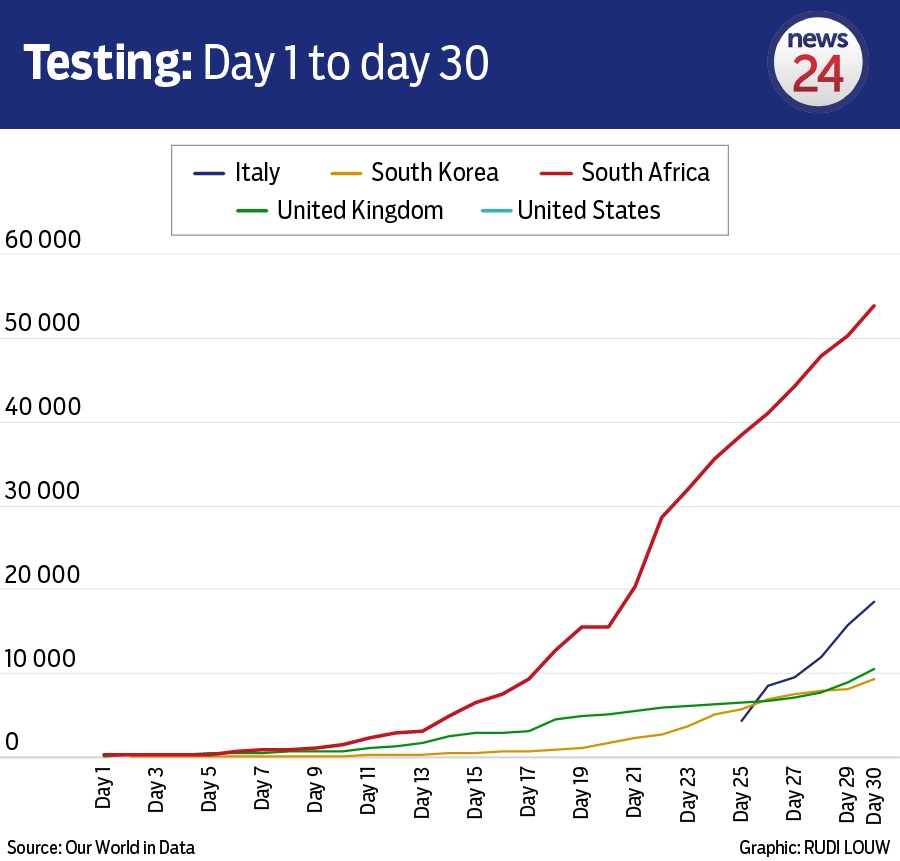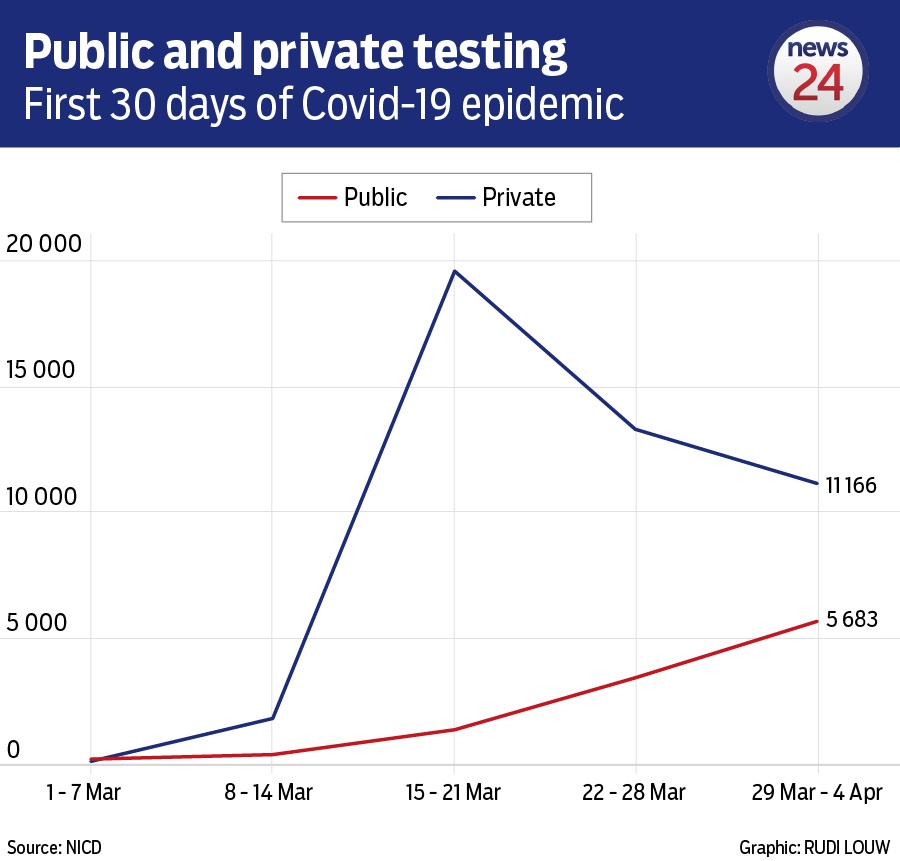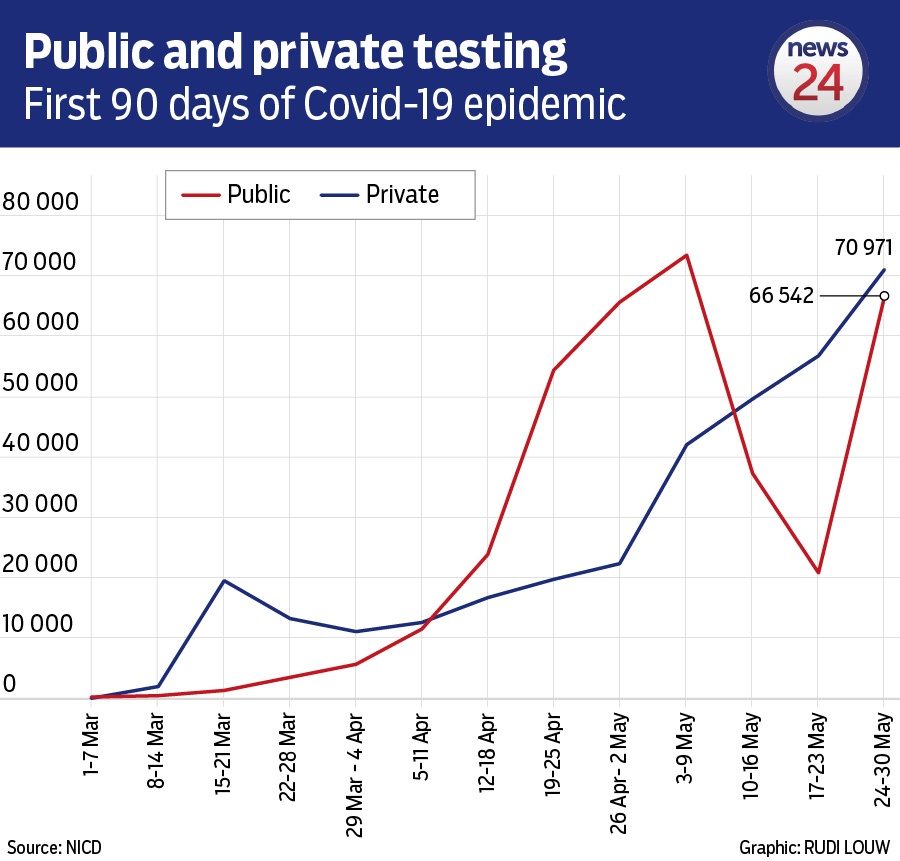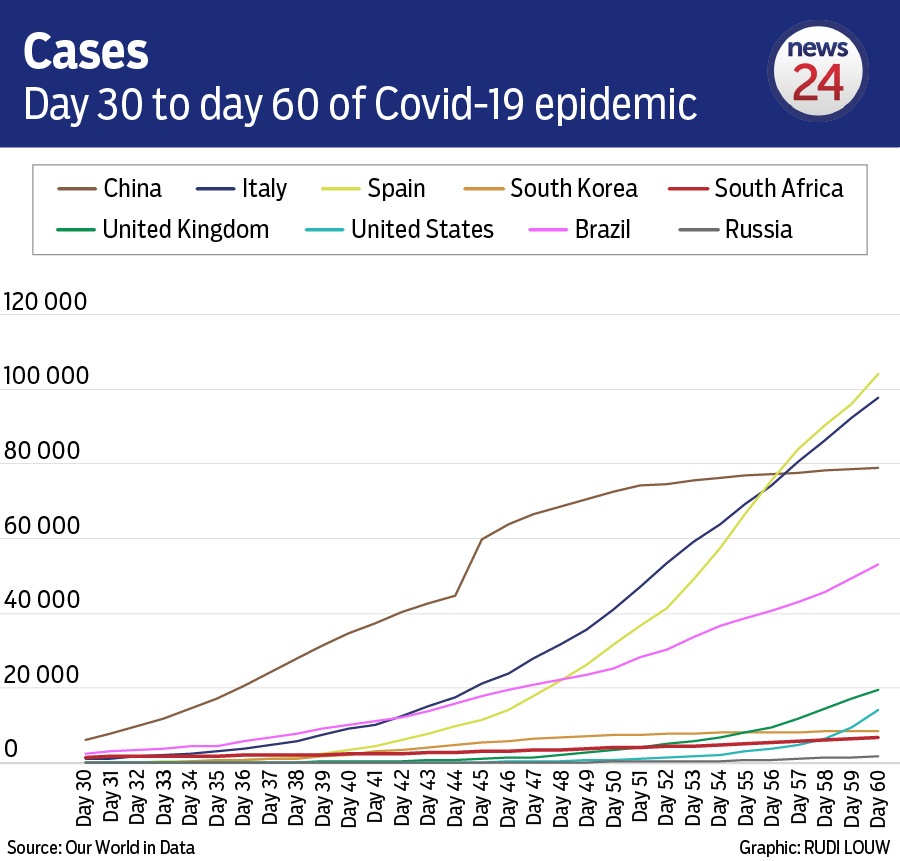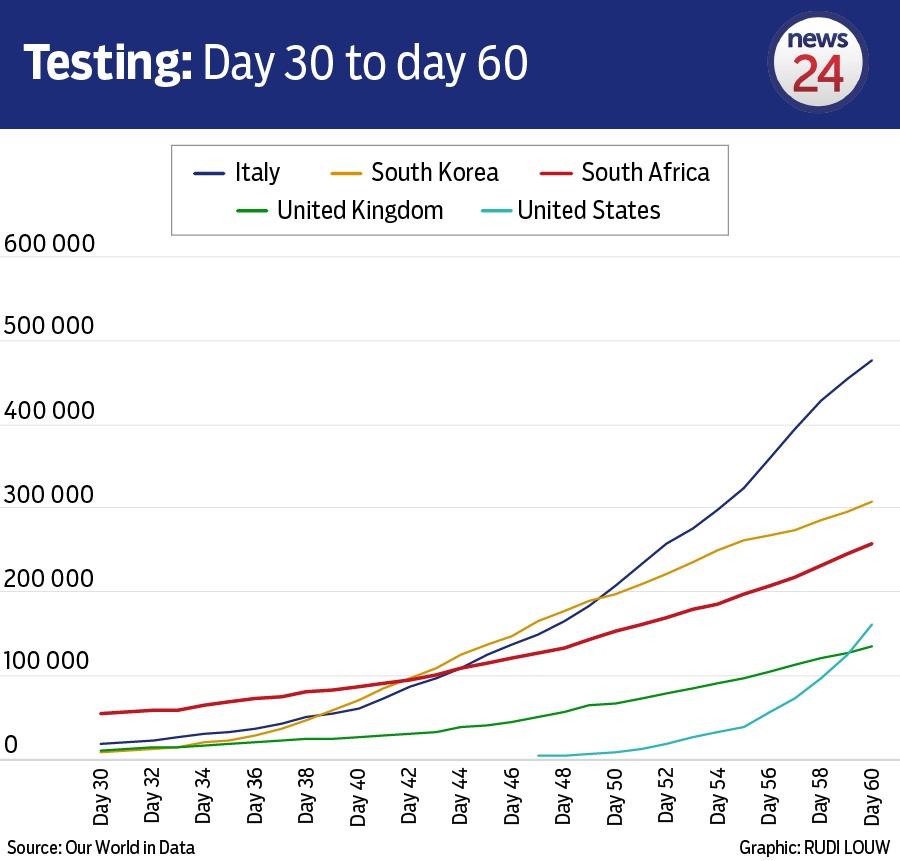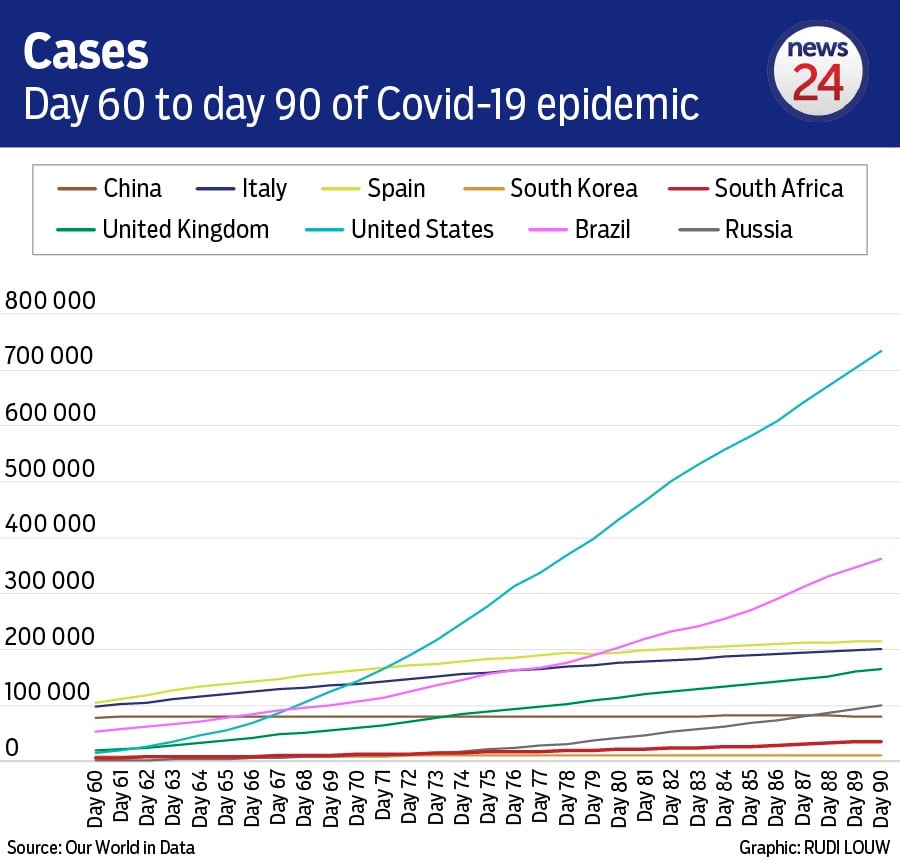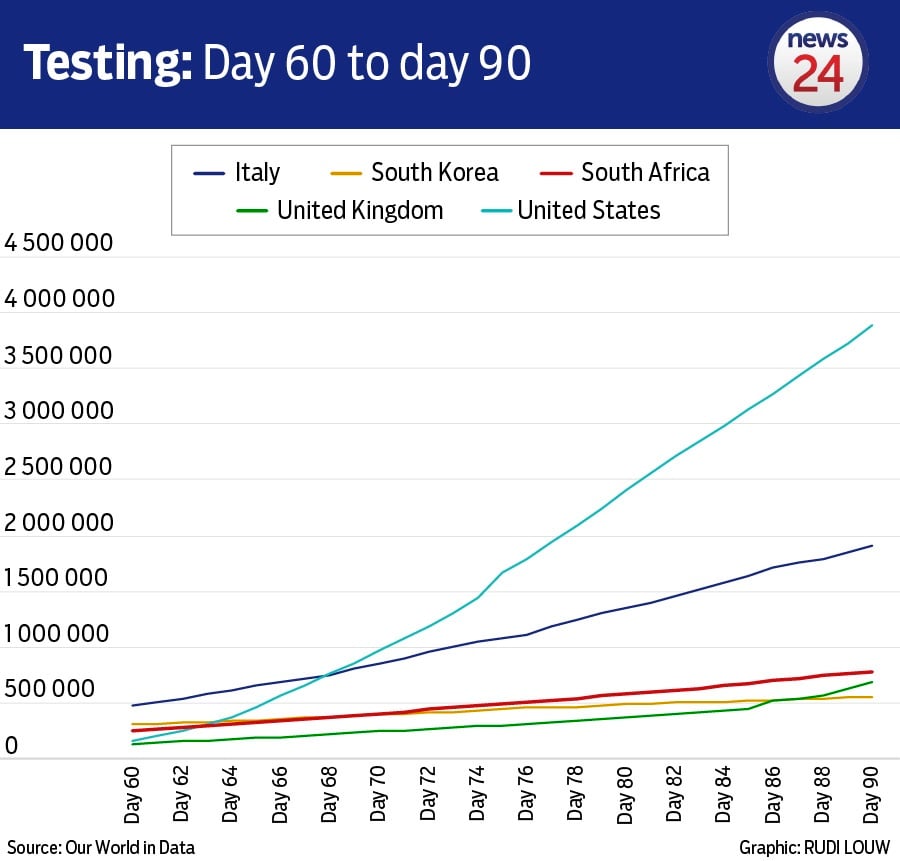News24.com | INFOGRAPHICS | The first 90 days of Covid-19: How does SA compare to the world?

- A 90-day comparison of the epidemic in various countries shows how early action impacted the spread of the coronavirus.
- In the first 30 days, South Africa conducted more tests that some of the richest and most powerful countries in the world.
- The early, hard lockdown instituted in South Africa on 27 March prevented thousands of coronavirus cases.
A comparison of the first 90 days of the Covid-19 epidemic in South Africa with some of the hardest hit countries in the world, shows how the early lockdown in SA prevented thousands of coronavirus cases.
South Africa also managed to conduct more tests in the first 30 days of the epidemic than most economic powerhouses, such as the US and even South Korea, which has been globally recognised as having set the bar for rapid and sufficient testing to clamp down on the transmission of the virus.
While the country was quickly overtaken in terms of testing and confirmed cases by other countries where the epidemic took root much earlier in the year, insight provided by tracking the spread of the virus over the number of days the epidemic has been present, is telling.
The first 90 days of the epidemic in countries such as China, the US, the United Kingdom, South Korea, Italy, Spain, Brazil and Russia, when compared to South Africa, shows that South Africa has managed to keep a handle on the transmission of Covid-19 quite successfully.
The US overshadows every other country in terms of its number of cases and the number of tests it has done, but it also shows that SA managed to keep a tighter lid on the epidemic in the first 90 days – although it must be noted SA had far more warning.
Comparatively, South Africa’s Day 1 of the epidemic is 5 March, while other countries confirmed cases much earlier in January (Italy, South Korea, US) and February (Russia, Brazil, UK, Spain).
China, the epicentre of the outbreak first reported cases in December 2019.
But South Africa was put under lockdown, mass gatherings were banned as well as international travel from high-risk countries, and schools and universities were shut down far earlier in the local outbreak than most others.
A comparison of the first 30 days of the epidemic in the countries chosen, shows that SA found cases at a much higher rate than all the other countries, until being surpassed by Brazil around Day 26 of their respective epidemics.
By Day 30, South Africa had found 1 505 cases, compared to Italy’s 888 and Brazil’s 2 433, the UK (18), the US (15), Spain (82) AND South Korea (31).
The higher number of cases found, however, is closely linked to the number of tests done.
No testing data was available for Brazil, Russia and China. The US. meanwhile, only started reporting tests done on Day 47 of its epidemic, and Italy reported a little more than 4 000 tests for the first time on Day 25.
In the first 30 days, South Africa conducted more testing than the other countries. By Day 30, SA had conducted 59 937 tests, compared to Italy’s 18 661, the UK (10 488) and South Korea (9 265).
SA’s considerably higher number of tests for the first 30 days was down to the private sector which, in the week of 29 March to 4 April alone, conducted 11 166 Covid-19 tests, compared to the public sector’s 5 683 for the same week.
The public sector would later ramp up its capacity considerably, as seen in this week-on-week comparison of public and private tests conducted.
The 30-to-60 day timeline of the various epidemics shows how SA managed to maintain a relatively low rate of epidemic growth, while the other countries quickly grew exponentially. Over this time, SA was under hard lockdown.
By Day 60, SA had recorded 6 783 cases, compared to China (59 865), Italy (97 689), Spain (104 267), South Korea (8 565), the UK (19 522) and the US (14 250).
Testing followed similar trajectories – a logical correlation – for most countries. Between Day 30 and 60, SA was still tracking other countries closely. These countries, however, had less time to plan and put in place testing regimens – their progress is reflected clearly in the 1 to 90 days graphic.
It is apparent that the US was slow off the mark in terms of testing for Covid-19, but it has since surpassed the rest of the world. As seen in this graph, the US only started reporting tests done on Day 47 of its outbreak – but in 13 days, the country conducted 161 543 tests.
By Day 60, SA had conducted 257 541 tests, compared to Italy (477 359), South Korea (307 024) and the UK (134 946).
Between Day 30 and 90, South Africa’s number of cases pale in comparison to the rest of the countries.
By Day 90, South Africa recorded 35 812 cases, compared to China (80 973), Italy (201 505), Spain (215 183), South Korea (10 653), the UK (165 221) and the US (735 086).
But comparatively, the US again tested more than any other country.
By Day 90, SA had conducted 785 979 tests compared to Italy (1 910 761), South Korea (554 834), the United Kingdom (687 369) and the US (3 887 119).
This shows that, for the first 90 days of the epidemic, SA tested on par with some of the biggest countries in the world – and found less cases.
Important notes about this article:
- Data for the number of cases used in this article was published by Our World in Data, which collects the data from official sources in various countries. Doubts have been raised over the accuracy of the data for countries such as China, Brazil and Russia.
- South Africa’s number of cases is heavily weighted by cases found in the Western Cape, which is experiencing an outbreak which is at a much higher intensity than other provinces.
- Testing data for South Africa used to compare the public and private sector was published by the National Institute for Communicable Diseases, which reports tests by sample collection or delivery date – not the date the test results are reported by the Department of Health.
- Data for cases in China was not adjusted to consider that the first case of Covid-19 was traced back to November 2019, and News24 considered 31 December as ‘Day 16’ of the epidemic in China, a rough adjustment based on previous estimations that the epidemic in China started around 15 December.
